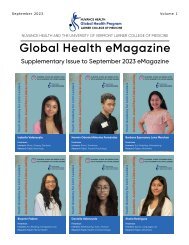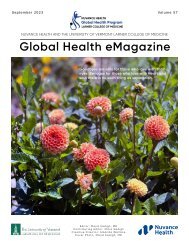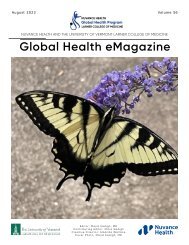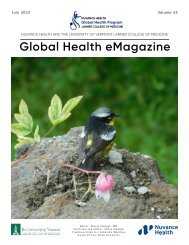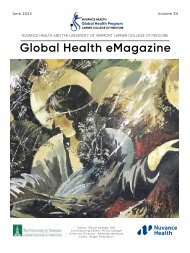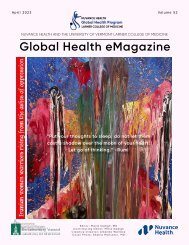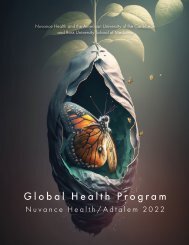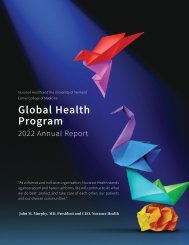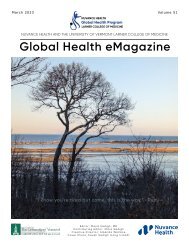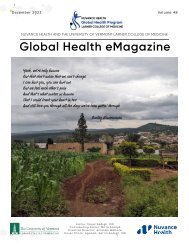emagazinenov2022
Create successful ePaper yourself
Turn your PDF publications into a flip-book with our unique Google optimized e-Paper software.
OUR PEOPLE,<br />
OUR MISSION<br />
Decolonization of<br />
Global Health<br />
Global Health<br />
eMagazine<br />
November 2022<br />
Editor: Matsiko Joshua<br />
Written by Joshua Matsiko<br />
Medical Student at MakCHS<br />
Matsikojoshua091@gmail.com<br />
Highlights<br />
Spotlight<br />
Karamoja Famine: Karamoja Crisis,<br />
A World Model to End World Hunger<br />
Reflections<br />
Global Local<br />
UNG77<br />
Among the Letters<br />
Nursing Division<br />
Decolonization<br />
Art to Remind Us of Who<br />
We Can Be<br />
Our Beautiful Planet<br />
Ebola in Uganfda<br />
Article of the Month<br />
Video of the Month<br />
Congratulations<br />
Global Health Family<br />
Photo News<br />
Photo Gallery<br />
Resources<br />
I woke up to saddening news on a fateful<br />
morning of a young toddler who was found<br />
suckling her dead mother in the Karamoja<br />
subregion in Uganda who had died a while<br />
ago due to starvation. Karamoja has had<br />
one its worst famine crises this year that has<br />
already claimed more than 1000 lives, with<br />
some districts like Kotido having over 626 and<br />
Kabong with 260 confirmed deaths. According<br />
to UNICEF statistics, 80% of the households<br />
in Karamoja are either critically food insecure or simply food insecure while<br />
approximately 24% of children are either moderately or severely malnourished.<br />
Karamoja is a remote region in northeastern Uganda with a population of<br />
over 1.2 million people with seven districts including Kabong, Abim, Moroto,<br />
Napak, Nakapiripirit and Amudat. For decades the region has been regarded<br />
as a backward and troublesome area. Many blame the famine on insecurity,<br />
an inhospitable environment, and natural causes like climate change and<br />
soil erosion, which are largely true. On deeper investigation, the problem is<br />
rooted more anciently than presently. The roots of the present famine lie in the<br />
intense colonial exploitation of the people of Karamoja, an exploitation that<br />
systematically destroyed not only the pastoral way of life but also hampered the<br />
transition to an agricultural mode of existence.<br />
In the 1920s, Karamoja was initially divided into three natural zones, as per the<br />
differing climatic conditions: grass and tree steppe in the dry zones, lush grass<br />
savannah in the moist areas and forests in the uplands, and larger mountains.<br />
Despite the large number of game animals there was no overgrazing or<br />
deterioration of cover as the animals mostly lived by extensive browsing of the<br />
shrubs and trees. On the contrary, these animals contributed to the stability of<br />
the environment by ensuring occurrence of the grass, hence there was stable<br />
plant cover and erosion was negligible. The Karamojong then had a system of<br />
regulations that ensured continued productivity of their grazing areas and the<br />
type of grazing practiced was a pastoral version/and burn/agriculture. In the<br />
central part which was more fertile and moist, farming and nomadic grazing were<br />
practiced by the Mayattas while in the eastern and western drier parts, grass<br />
was burned annually at the end of every dry season which controlled growth<br />
18<br />
Decolonization continued on next page >>




